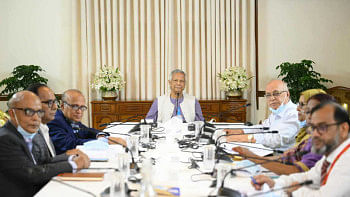Equality vs privilege
“Why do you want separate seats when you talk about men-women equality?” is the comment we often hear, whenever an argument arises in public buses regarding the allocation of seats for women.
The answer lies in the day-to-day incidents of harassment we face as women irrespective of our age. A few days back on my way to work from an assignment I had no choice but to get on an already over-crowded Bangladesh Road and Transport Corporation (BRTC) double-decker bus. Let alone the nine designated seats, there were no place even to stand on the aisle. Burrowing my way through the crèches of human wall formed by men at the gate of the bus, I found a footing near the stairs.
However, after a while I was forced to look for an alternative place to stand for almost every male passenger who came down the stairs would invariably brush by, making me extremely self-conscious of my body. Perhaps not all of them had bad intention tucked up in their sleeves the experience nevertheless was not pleasant.
Inappropriate behaviour by men is something almost all women who travel in public bus in Bangladesh faces. Even a seat does not guarantee a harassment free travel. A colleague shares her experience in a public bus. “There was a forty plus man with his hands crossed over his chest sitting beside a teenage girl, who sat next to me in the front seat of the bus near the windshield. When the girl kept on moving over to my side, I noticed that he was touching her with his fingers. I sternly told him to move away but he ignored me,” she said.
In most of these situations we, women, do not protest because there is no visible proof of the harassment. The perpetrator can always bring up the excuse that the 'touching', 'brushing', or 'poking' was an unintentional accident and in most cases, he gains support from other men inside the bus in his argument. “If you are so sensitive, why do you even ride a public transport,” are comments most of us have heard when we protested against harassment.
So what did government do --- allocate seats for women, children and disabled people. But that does not prevent the harassment at the time of getting into and out of the bus. Bus helpers would grab our upper arm to pull us, the apparent weak-being, inside the vehicle. Even though there are empty seats at the back of the bus some men would crowd the front aisle pressing against our face with their back or front unless we move our head and decide to rather rest it on our fellow passenger's shoulder.
To avoid all these, we can choose to travel by the 10 BRTC buses that run in the city for women! A working woman shares her experience of this venture. In her entire eight years of commuting on public buses she traveled in those buses only twice. “Once during a hartal and the other time when I had to get off from the bus. Iwas commuting in for some sort of trouble,” she said. In both cases, she had to wait hours before she could sight one women-only bus. “They are irregular, never on time and not well maintained, because on both time I got into one, they broke down thrice.”
Treating the problem of harassment of women in public transport by allocating seats or providing women-only transport is a reactive measure not a preventive one. What needs to be addressed is attitudes of men and ensuring there is enough public transport for all. In fact, if the quantity and quality of public transport service can be increased and improved then men who take advantage of crowded buses to harass women would not stand a chance.
The writer is a Reporter, The Daily Star.


 For all latest news, follow The Daily Star's Google News channel.
For all latest news, follow The Daily Star's Google News channel. 




Comments